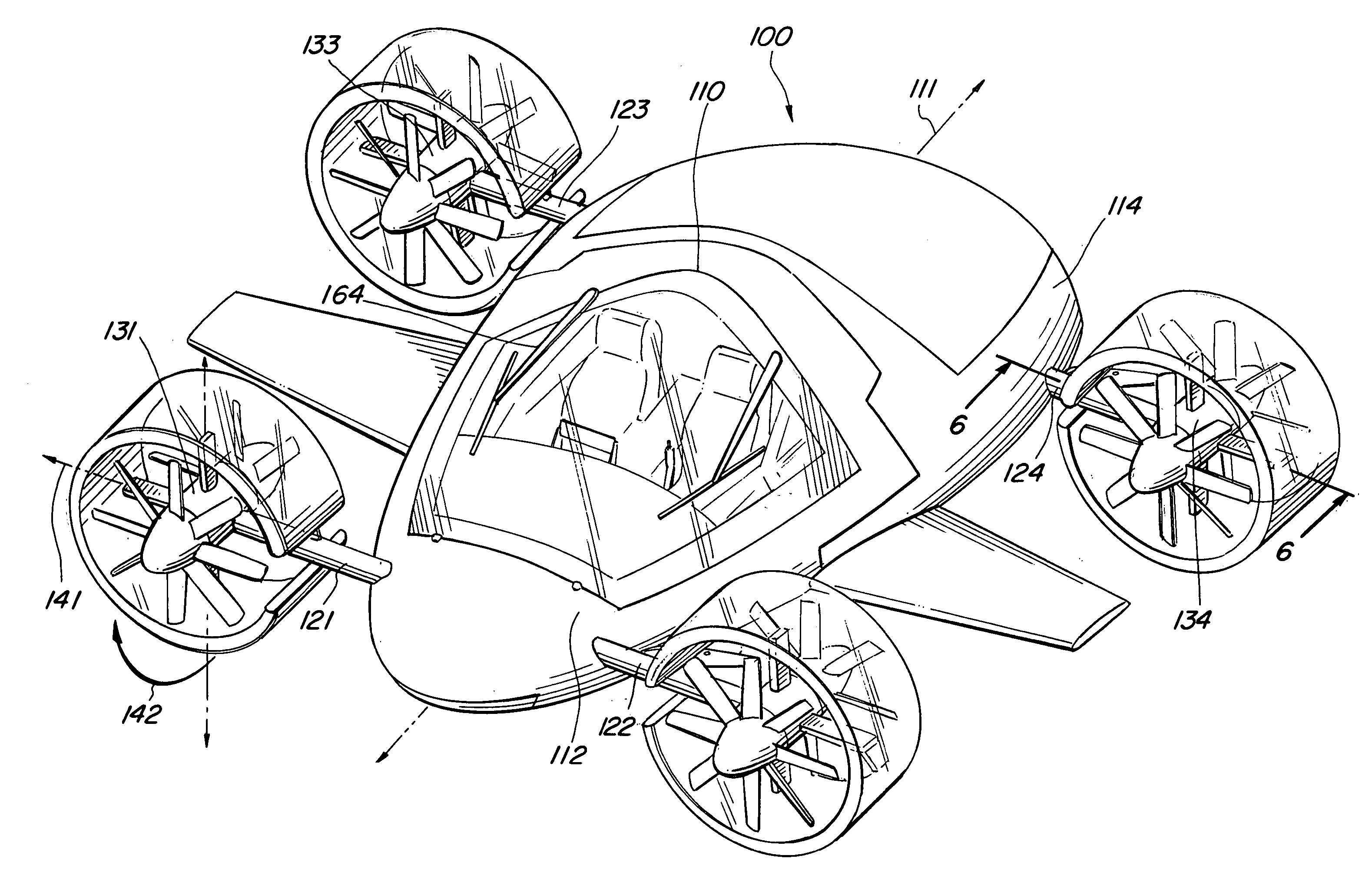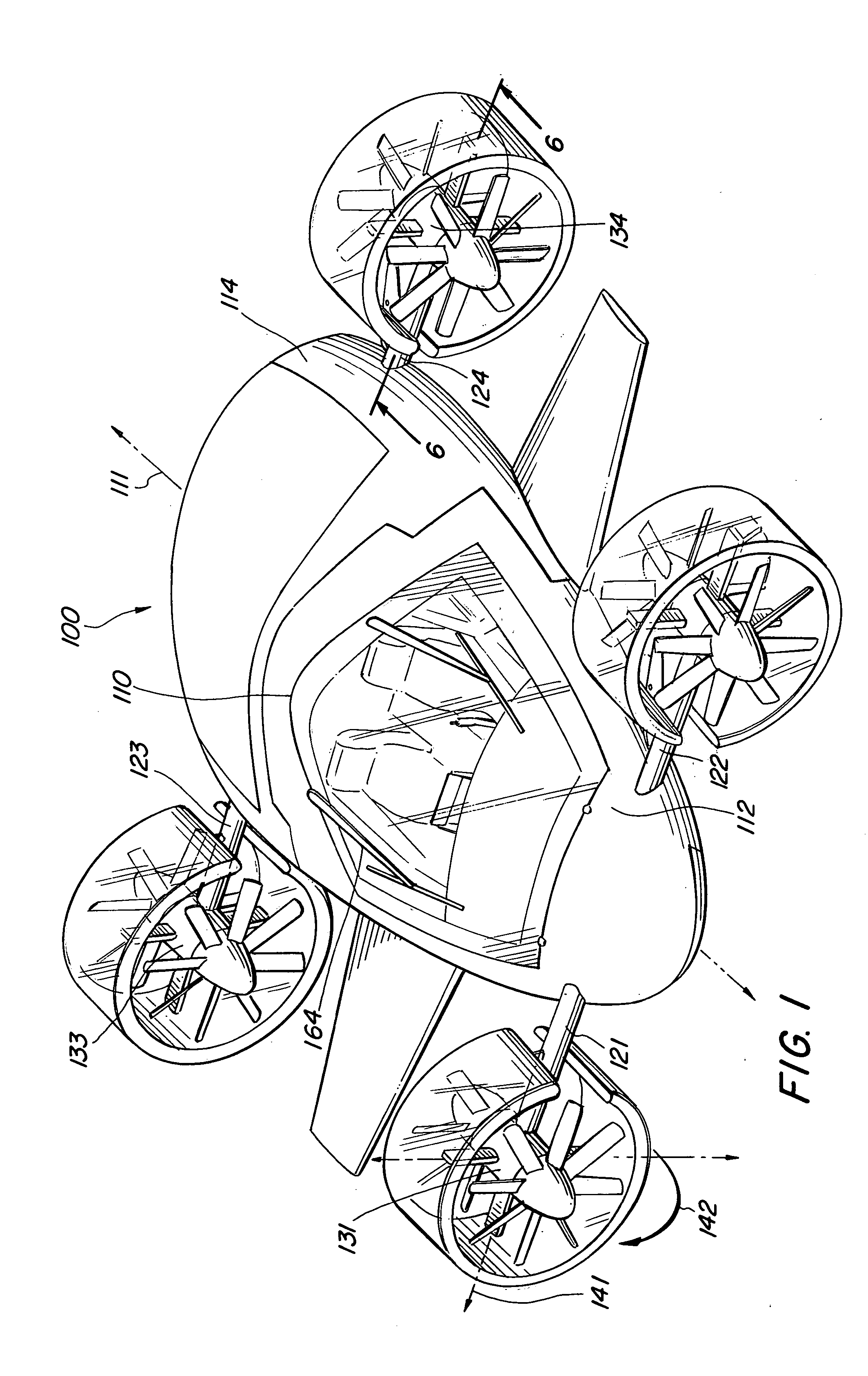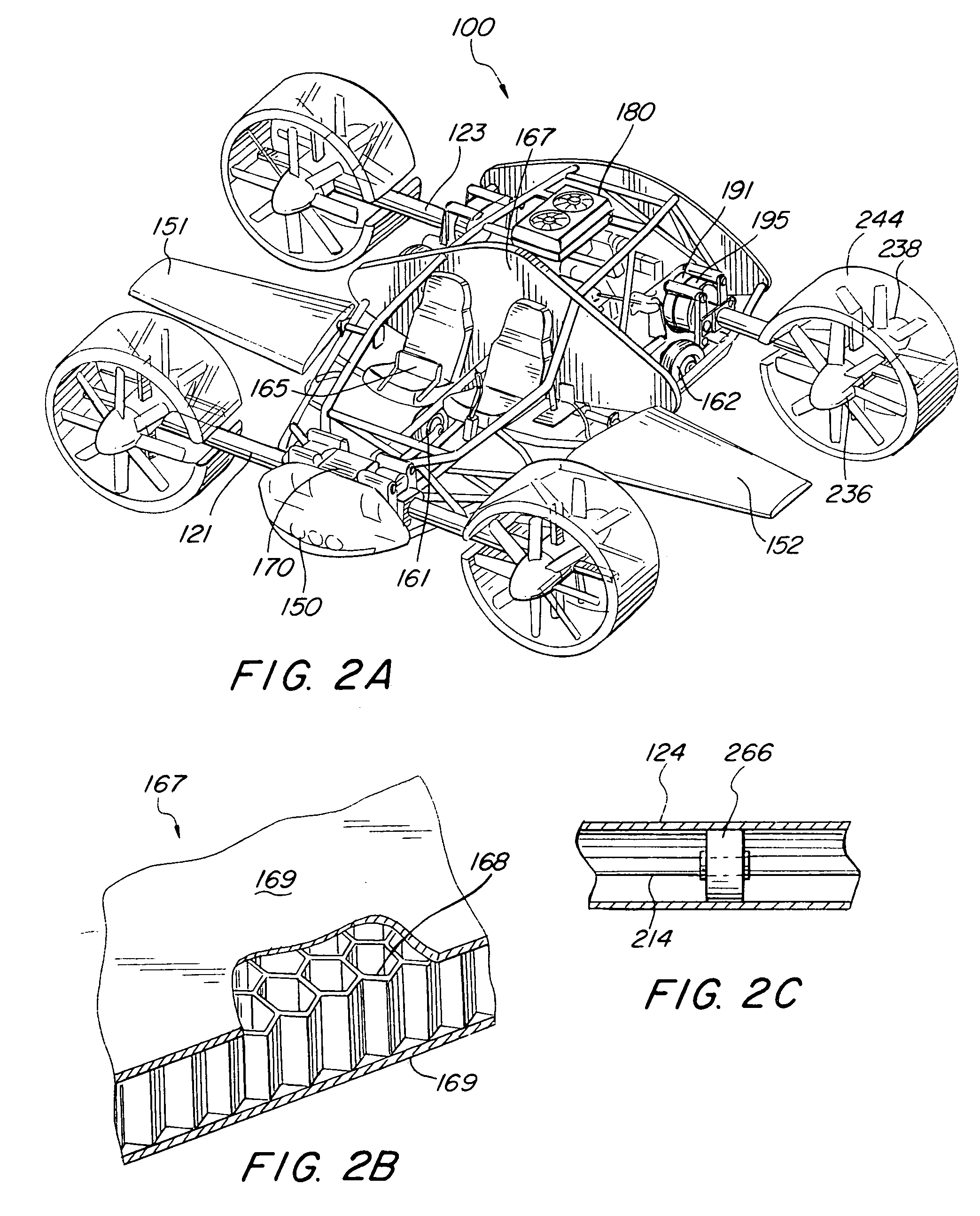Sky hopper
a technology of vtol and hopper, which is applied in the direction of toy aircraft, vertical landing/take-off aircraft, aircraft navigation control, etc., can solve the problems of limited use of helicopters, limited use of internal combustion engines, and numerous constraints of current travel methods, and achieve the effect of enhancing the shaft power produced by internal combustion engines
- Summary
- Abstract
- Description
- Claims
- Application Information
AI Technical Summary
Benefits of technology
Problems solved by technology
Method used
Image
Examples
embodiment 500
[0047]FIG. 4 illustrates a bottom aspect isometric view of the preferred VTOL aircraft 100 illustrating exterior features. Airbrake 299 has deployed and stowed positions and is being illustrated in its stowed position. FIGS. 5A and 5B illustrate a second preferred embodiment 500 of the present invention in flight and landed modes, respectively. This embodiment 500 employs airbrakes 510, 520 on right and left sides of the aircraft 500 and does not included control surfaces 151, 152. FIG. 5B also shows landed aircraft 500 having rudders 540 (FIGS. 7A and 7B) that vector thrust or impart a moment on the aircraft 500 and provide directional control of the aircraft 500 during flight.
[0048] Referring to FIG. 6 a perspective view of a first preferred propulsion unit 134 has been sectioned along line 6-6 of and is illustrated in FIG. 1. Initially, shaft power is transferred from horizontal shaft 214 to forward (not shown) 236 and rear fan units 238, via planetary gear assembly 176. Shaft 21...
embodiment 600
[0052]FIG. 9A is an additional illustration of power train 200, generally as viewed from a forward position and FIG. 9B illustrates an alternative power train 600 of the present invention. Power train 600 instead employs four electric motors 611, 612, 613, 614 providing shaft horsepower, the motors 611, 612, 613, 614 receive electrical power from power generator 610. It is contemplated that generator 610 will require relatively high electrical output requirements without adding significant size and weight, and the required shaft horsepower may require three-phase electrical power with single-phase or three-phase motors. This embodiment 600 may be referred to as a “hybrid configuration.”
[0053]FIGS. 10A through 10H illustrate a preferred VTOL aircraft 700 in various operational modes. This particular embodiment 700 has control surfaces 151, 152 and rudders, 540 for example, for directional control. FIG. 10A shows aircraft 700 in park with landing gear 161, 162 deployed. FIG. 10B shows...
PUM
 Login to View More
Login to View More Abstract
Description
Claims
Application Information
 Login to View More
Login to View More - R&D
- Intellectual Property
- Life Sciences
- Materials
- Tech Scout
- Unparalleled Data Quality
- Higher Quality Content
- 60% Fewer Hallucinations
Browse by: Latest US Patents, China's latest patents, Technical Efficacy Thesaurus, Application Domain, Technology Topic, Popular Technical Reports.
© 2025 PatSnap. All rights reserved.Legal|Privacy policy|Modern Slavery Act Transparency Statement|Sitemap|About US| Contact US: help@patsnap.com



